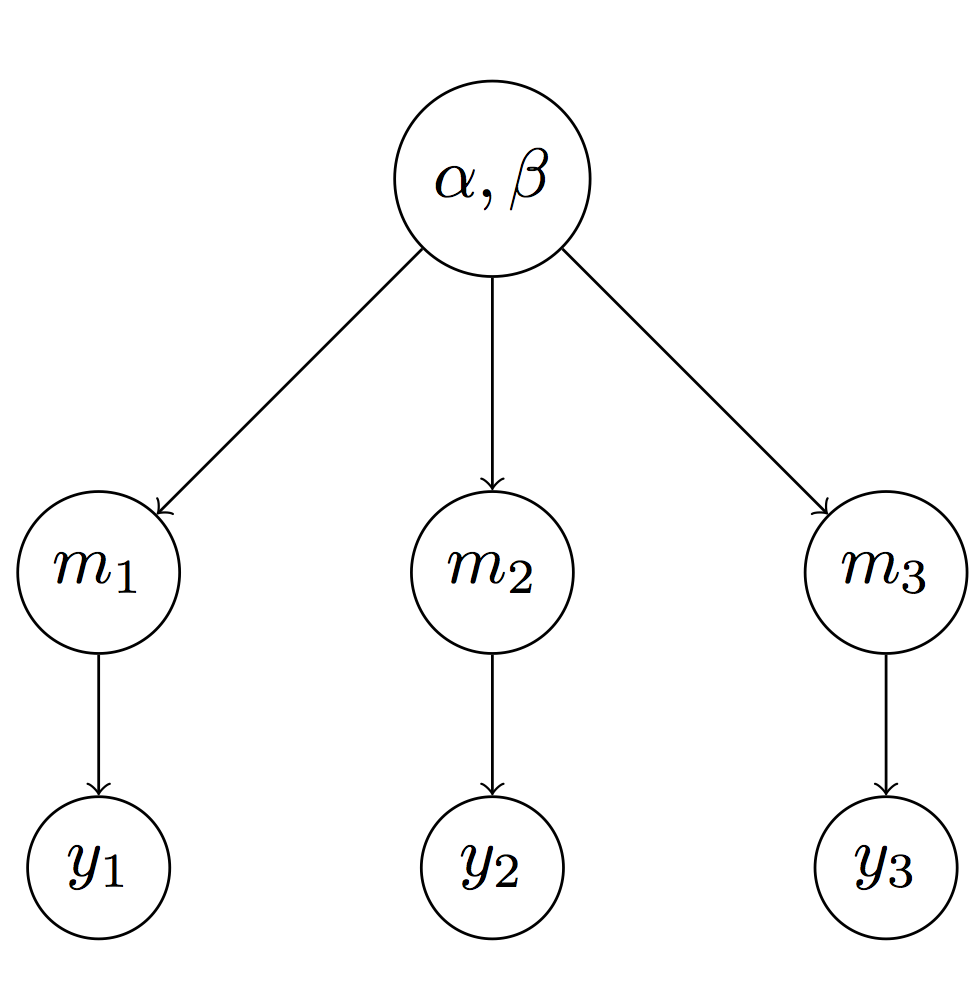So I have fundamental confusion about graphical models. Suppose the following graphical model is given:
Now the question is do we have the following equality?: $$p(m_2|\alpha,\beta,y_3)=p(m_2|\alpha,\beta)$$
If so, why exactly and could you please introduce me a source explaining it?
